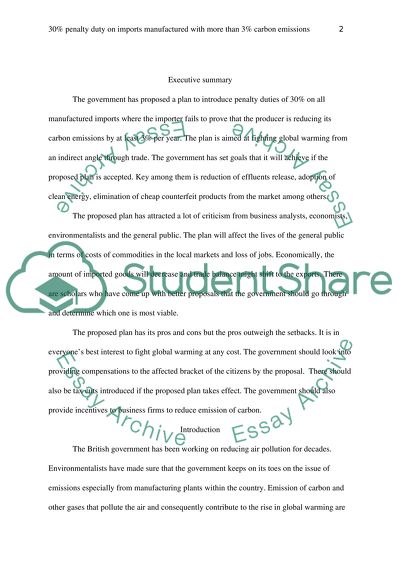Cite this document
(“The government is proposing to introduce penalty duties of 30% on all Essay”, n.d.)
The government is proposing to introduce penalty duties of 30% on all Essay. Retrieved from https://studentshare.org/miscellaneous/1595288-the-government-is-proposing-to-introduce-penalty-duties-of-30-on-all-manufactured-imports-where-the-importer-fails-to-prove-that-the-producer-is-reducing-its-carbon-emissions-by-at-least-3-per-year
The government is proposing to introduce penalty duties of 30% on all Essay. Retrieved from https://studentshare.org/miscellaneous/1595288-the-government-is-proposing-to-introduce-penalty-duties-of-30-on-all-manufactured-imports-where-the-importer-fails-to-prove-that-the-producer-is-reducing-its-carbon-emissions-by-at-least-3-per-year
(The Government Is Proposing to Introduce Penalty Duties of 30% on All Essay)
The Government Is Proposing to Introduce Penalty Duties of 30% on All Essay. https://studentshare.org/miscellaneous/1595288-the-government-is-proposing-to-introduce-penalty-duties-of-30-on-all-manufactured-imports-where-the-importer-fails-to-prove-that-the-producer-is-reducing-its-carbon-emissions-by-at-least-3-per-year.
The Government Is Proposing to Introduce Penalty Duties of 30% on All Essay. https://studentshare.org/miscellaneous/1595288-the-government-is-proposing-to-introduce-penalty-duties-of-30-on-all-manufactured-imports-where-the-importer-fails-to-prove-that-the-producer-is-reducing-its-carbon-emissions-by-at-least-3-per-year.
“The Government Is Proposing to Introduce Penalty Duties of 30% on All Essay”, n.d. https://studentshare.org/miscellaneous/1595288-the-government-is-proposing-to-introduce-penalty-duties-of-30-on-all-manufactured-imports-where-the-importer-fails-to-prove-that-the-producer-is-reducing-its-carbon-emissions-by-at-least-3-per-year.


